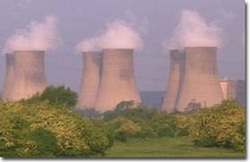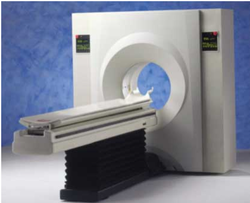Successes

A nuclear power plant
Although we have concluded that
the decision to drop the bombs was a failure in many ways,
there were some successes. In the end it saved lives, both civilian
and military, American and Japanese because it ended the war quickly.
The bomb's main success was the surrender of the Japanese on September 2nd, 1945.
Intimidating the Russians may have turned out to be useful whether or not it was the U.S.'s intention, because if the U.S. had not used the atomic bomb Russia may have invaded part of Eastern Europe after the war and the U.S. would have been forced to start a nuclear war against Russia anyway. Also intimidating Russia instigated them to acquire atomic weapons too, and the fact that both the U.S. and Russia had atomic weapons allowed the Cold War to stay “cold”.
The invention of the bomb stimulated research for civilian use of nuclear energy such as nuclear power plants. It also led to the development of nuclear medicine used for cancer treatments like tumor irradiation.
Intimidating the Russians may have turned out to be useful whether or not it was the U.S.'s intention, because if the U.S. had not used the atomic bomb Russia may have invaded part of Eastern Europe after the war and the U.S. would have been forced to start a nuclear war against Russia anyway. Also intimidating Russia instigated them to acquire atomic weapons too, and the fact that both the U.S. and Russia had atomic weapons allowed the Cold War to stay “cold”.
The invention of the bomb stimulated research for civilian use of nuclear energy such as nuclear power plants. It also led to the development of nuclear medicine used for cancer treatments like tumor irradiation.


